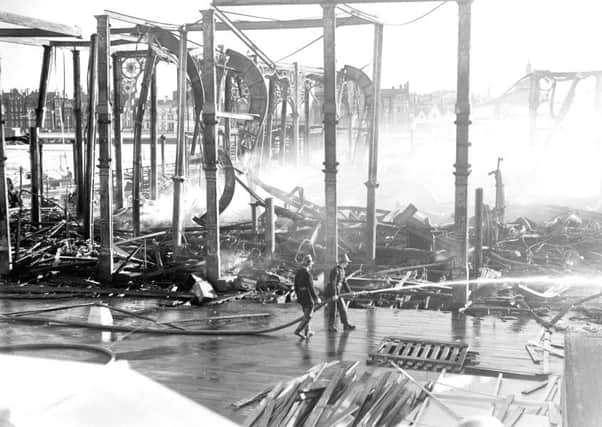Looking back at the fire which gutted South Pier Pavilion in 1958


If it hadn’t been for the wind changing, the resort’s South Pier could have been destroyed, when a fire broke out in the early hours of February 17.
Flames roared 70ft into the air, and the glow in the sky was visible as far away as Fleetwood and Preston.
Advertisement
Hide AdAdvertisement
Hide AdThe heat was so intense the metal framework of the building was twisted.
The 50ft high minaret-topped amusement arcade – once known as the Grand Pavilion – where the blaze began, and which contained the cafe, bar and shops, was gutted.
Damage was estimated at £100,000.
Sixteen phone calls from a wide area were received by the fire brigade. The first call, timed at 1.52am, came from the pier nightman, Ernest Jenkinson, from Layton. By 3.22am the fire was under control, but when fire fighters arrived, the wind was coming from the north west.
It was threatening to spread the blaze along the pier. It also threatened the Pleasure Beach, as embers and sparks were wafted across the Promenade.
Advertisement
Hide AdAdvertisement
Hide AdAs the firemen tackled the pavilion, flaring like a torch, the wind changed. The sparks and embers were blown on to the sands instead.
The firemen succeeded in confining the blaze to the building. It did not spread to the Rainbow Theatre, at the far end of the pier, or the big Regal Pavilion – at the Promenade end, where Shirley Bassey and Norman Evans would be performing that summer.
Eight jets were used and the operation was directed by Blackpool’s chief fire officer, E Hamer.
All that was left of the arcade by the time daylight broke, was the gaunt steel framework.
Advertisement
Hide AdAdvertisement
Hide AdThe fire meant a serious setback in the company’s seven-year plan to put the pier into “first-class condition”.
It wrecked the intention of announcing a dividend to shareholders – which would have been the first in four years.
It was only two months earlier, in the annual meeting in the very building which was destroyed, the directors had refused to take a fee because they said they wanted to see the pier completely on its feet first.